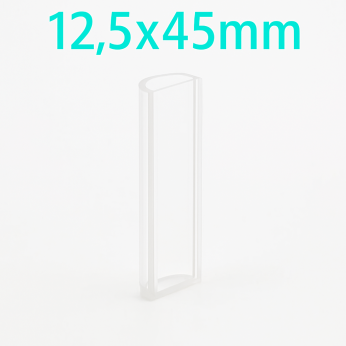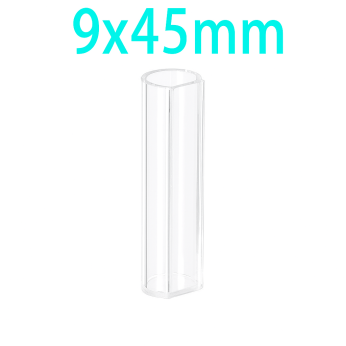How to choose the right cuvette cover?
We’re here with another brief page on how to choose the right type of cuvette closure. It might be difficult to determine which cuvette top is ideal for your needs. It’s especially tough to see the different prices for each type and correctly balance your alternatives when it comes to seeing the different prices for each type.
Cuvettes with PTFE Lids
This is the most simple form of cuvette cover, and it is also the most affordable. Most cuvettes come with these coverings as standard. Please read the cuvette description to see if the cuvette you desire comes with a lid.
Cuvettes with PTFE Lids

(VNE069) 50uL Sub Micro Absorption Cuvette, Black, Bonded, 2 Windows, Z dim 8.5/15mm



We have two different styles of covers in stock. The first is PTFE lids, which are more prevalent. PP lids are the alternative option available on request. They’re designed for disposable cuvettes, but they’ll suit most 10 mm cuvettes as well. Because they become deformed after being taken from a cuvette, they are primarily intended for one-time usage. When the cuvette is inverted, this sort of lid creates a good seal, ensuring that the cuvette does not leak. Small ridges on the sides of the LDPE covers enable for this seal, however as previously stated, these ridges degrade after just one usage.
As a result, a PTFE lid is not airtight. It also lacks the ridges seen in disposable covers.
Cuvettes with PTFE Stoppers
A stopper top is the next step up from a basic PTFE cover. These stoppers are fantastic since they make sealing a cuvette a breeze and create an almost airtight seal. To create this seal, we fuse a quartz or glass block on top of a conventional 10 mm cuvette, then use a tapered bit to drill a hole in the block. We give the taper a “rough” finish so that when a stopper is put, the minor flaws in the taper create a tight seal. Because the stoppers are so tight, some customers have had to use pliers to remove them!
Cuvettes with PTFE Stoppers



(VNE012) 3.5mL Fluorescence Cuvette with PTFE Stopper and Bottom Stirrer Sit, Fused, Lightpath 10mm


Cuvettes with Screw Caps
These caps are ideal for experiments that need to be airtight. The threading on top of the quartz cuvette creates an ultra-tight seal, making it the finest cuvette sealing choice. To form a re-sealable and chemical-resistant seal, the PTFE/SIlicon Septa is torqued down.
Customers that operate in anaerobic environments love our screw cap cuvettes. The Septa Caps provide you the option of injecting a sample into the cuvette while maintaining the airtight seal.
The PTFE/Silicon disks in the caps wear out after a few uses and need to be changed, which is a disadvantage of this type of seal. Because PTFE is a very hard substance, the PTFE layer becomes “indented” after usage and can only be used for a limited number of applications. So, if you’re planning on conducting anaerobic work with our screw cap cuvettes, make sure you get some extra septa.
Cuvettes with Screw Threaded Caps


(VNE063) 0.7/3.5 mL Fluorescence Cuvette with PTFE Valve, Molded, Lightpath 2/10 mm, 4 Clear Walls


(VFSM10) 3.5mL Standard Fluorescence Cuvette with Screw Cap, Molded, Flat Bottom, Lightpath 10mm
This brings us to the end of our cuvette closure roundup. We will be delighted to address any questions you may have regarding any of these sealing techniques. You may either leave a comment in the live chat below or send us an email.



